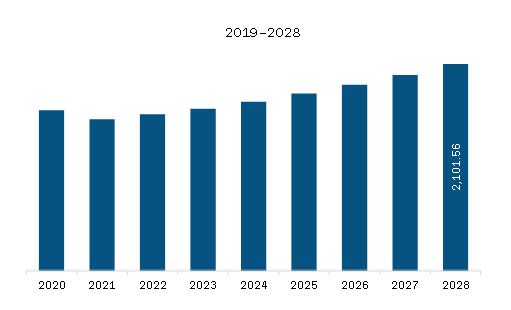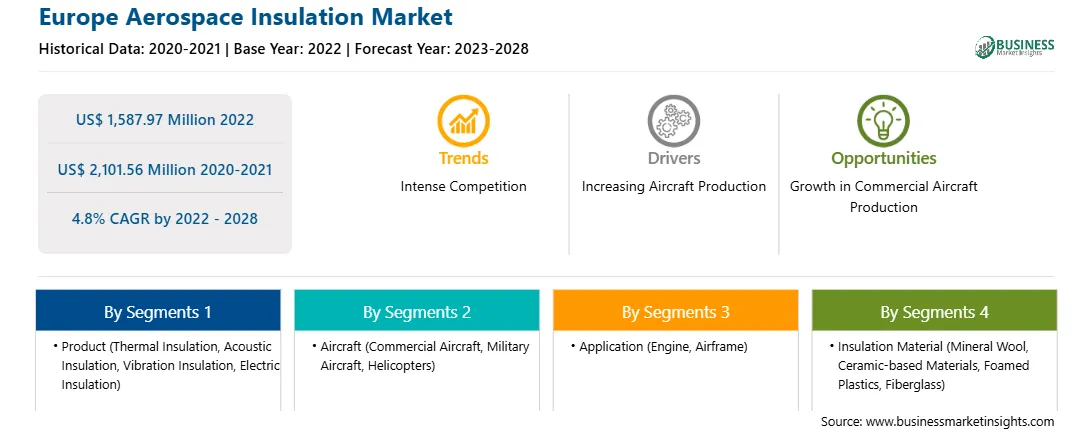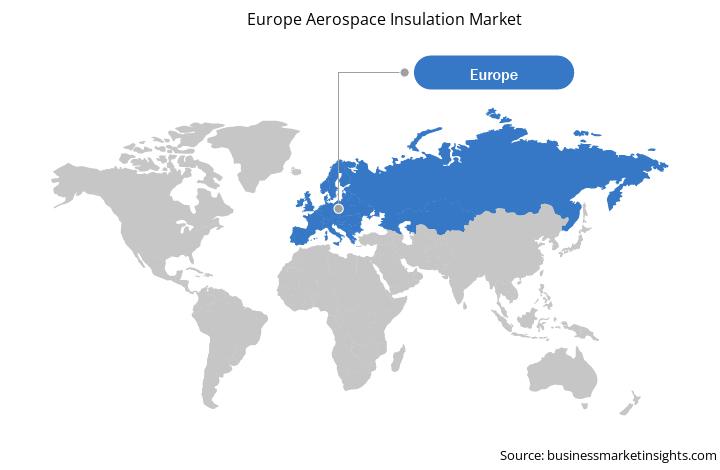Growing Demand for Lightweight Insulation Materials
Rising for fuel-efficient engines with corrosion-resistant insulation properties is increasing the demand for lightweight insulation materials. Demand for aerospace insulation is also increasing with the growth in manufacturing of aircraft, increase per capita income, and increasing investment is supporting the growth of aerospace insulation. Further, growing initiatives to connect peripheral cities to major aviation hubs, and growing demand for aircraft from the commercial, military and defense is fueling growth to boost the demand for lightweight insulation material. Furthermore, the growing attention to environmental pollution and the growing need to improve fuel efficiency fuel the sector's growth. Increasing technological advances to reduce manufacturing costs and improve fuel efficiency are expected to provide huge growth opportunities for the industry. Further, there is growth in the use of lightweight composite materials to produce aircraft, as these materials are made from which includes concrete, fiber reinforced polymer, metal composites, and ceramic composites, these materials are combined to make lightweight composite materials which has high strength, flexibility and are lightweight compared to aluminum or steel materials used in aircraft production. In addition, these materials are corrosion resistant, which means that the shell of an aircraft structure remains corrosion resistant in all weather conditions, and an increase in investments in research and development of new materials in the aerospace insulation market led to the development of advanced composite materials, such as Polymer Matrix Composites (PMC), Ceramic Matrix Composites (CMC) and Metal Matrix Composites (MMC). These composites have heat absorbing ability, lower weight, noise reduction, vibration absorption, and others. All these advances in aircraft isolation technology are driving the market growth.
Market Overview
The Europe aerospace insulation market is categorized into Germany, France, Italy, the UK, Russia, and the Rest of Europe. This regional market is witnessing high growth due to an increase in demand for lightweight materials, the introduction of advanced acoustic and fire-resistant materials resulting in safer operations of aircraft, declining cost of composite materials, and increasing demand for military helicopters. Moreover, Europe is a significant regional market owing to the presence of major manufacturers involved in commercial, military, and business jets. The growing use of aerospace insulation in Germany, France, the UK, and other European countries in airplane manufacturing is expected to enhance the growth of the regional market over the forecast period. However, European Aviation Safety Agency (EASA) imposes several standards, procedures, and norms to improve flight safety which can hamper the growth of this market in this region. The French aerospace industry is a significant industrial sector in the region. The aerospace industry comprises over 600 small and medium-sized enterprises such as Leonardo, UTC aerospace systems, among others in the region. Additionally, the UK government plans to invest 2.4% of the GDP in aerospace R&D by 2027 to improve the future of mobility and transition to clean growth.
Strategic insights for the Europe Aerospace Insulation provides data-driven analysis of the industry landscape, including current trends, key players, and regional nuances. These insights offer actionable recommendations, enabling readers to differentiate themselves from competitors by identifying untapped segments or developing unique value propositions. Leveraging data analytics, these insights help industry players anticipate the market shifts, whether investors, manufacturers, or other stakeholders. A future-oriented perspective is essential, helping stakeholders anticipate market shifts and position themselves for long-term success in this dynamic region. Ultimately, effective strategic insights empower readers to make informed decisions that drive profitability and achieve their business objectives within the market. The geographic scope of the Europe Aerospace Insulation refers to the specific areas in which a business operates and competes. Understanding local distinctions, such as diverse consumer preferences (e.g., demand for specific plug types or battery backup durations), varying economic conditions, and regulatory environments, is crucial for tailoring strategies to specific markets. Businesses can expand their reach by identifying underserved areas or adapting their offerings to meet local demands. A clear market focus allows for more effective resource allocation, targeted marketing campaigns, and better positioning against local competitors, ultimately driving growth in those targeted areas.
Europe Aerospace Insulation Strategic Insights

Europe Aerospace Insulation Report Scope
Report Attribute
Details
Market size in 2022
US$ 1,587.97 Million
Market Size by 2028
US$ 2,101.56 Million
Global CAGR (2022 - 2028)
4.8%
Historical Data
2020-2021
Forecast period
2023-2028
Segments Covered
By Product
By Aircraft
By Application
By Insulation Material
Regions and Countries Covered
Europe
Market leaders and key company profiles
Europe Aerospace Insulation Regional Insights

Europe Aerospace Insulation Market Segmentation
The Europe aerospace insulation market is segmented into product, insulation material, aircraft, application, and country.
Based on product, the market is segmented into thermal insulation, acoustic insulation, electric insulation, and vibration insulation. The thermal insulation segment registered the largest market share in 2022. Based on insulation material, the market is categorized into mineral wool, ceramic-based materials, foamed plastics, and fiberglass and others. The ceramic-based materials segment held the largest market share in 2022. Based on aircraft, the Europe aerospace insulation market is segmented into commercial aircraft, military aircraft, and helicopters. The commercial aircraft segment held the largest market share in 2022. Based on application, the Europe aerospace insulation market is bifurcated into engine and airframe. The airframe segment held the largest market share in 2022. Based on country, the market is segmented into Germany, France, Italy, the UK, Russia, and Rest of Europe. Germany dominated the market share in 2022. Duracote Corporation; Rogers Corporation; DuPont; BASF SE; 3M; Morgan Advanced Materials Plc; Polymer Technologies Inc.; TransDigm Group Incorporated; Triumph Group, Inc.; and Johns Manville are the leading companies operating in the aerospace insulation market in the region.
The Europe Aerospace Insulation Market is valued at US$ 1,587.97 Million in 2022, it is projected to reach US$ 2,101.56 Million by 2028.
As per our report Europe Aerospace Insulation Market, the market size is valued at US$ 1,587.97 Million in 2022, projecting it to reach US$ 2,101.56 Million by 2028. This translates to a CAGR of approximately 4.8% during the forecast period.
The Europe Aerospace Insulation Market report typically cover these key segments-
The historic period, base year, and forecast period can vary slightly depending on the specific market research report. However, for the Europe Aerospace Insulation Market report:
The Europe Aerospace Insulation Market is populated by several key players, each contributing to its growth and innovation. Some of the major players include:
The Europe Aerospace Insulation Market report is valuable for diverse stakeholders, including:
Essentially, anyone involved in or considering involvement in the Europe Aerospace Insulation Market value chain can benefit from the information contained in a comprehensive market report.